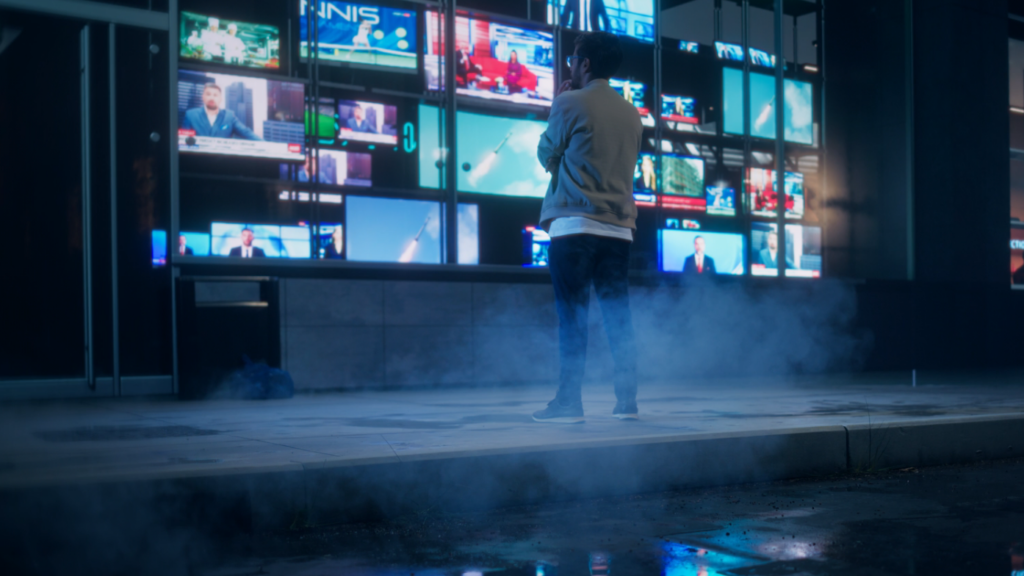Entertainment has long been a critical driver of retail development and leasing activity, with experiential retailers thriving before the pandemic. Brands defined as “experience-driven” were seeing annual growth rates of 19%, compared to 13% for traditional retailers, and saw repeat purchases nearly double those of non-experiential stores. However, the COVID-19 pandemic dramatically disrupted this momentum, with global movie production dropping by 41% and box office revenues plummeting by 72% in 2020. At the same time, online data consumption surged by 30% as consumers shifted to digital platforms for entertainment. With shelter-in-place and social distancing restrictions a thing of the past, movies and TV shows are reigniting foot traffic in brick-and-mortar stores.
The line between entertainment and retail is blurring, giving birth to a phenomenon dubbed “shoppertainment.” Experiential retailers, accounting for approximately 15% of all leasing activity over the past two years, are reshaping how consumers interact with brands. Retail is becoming more about the experience than just transactions. A key driver of this change is the influx of movie and TV show merchandise, luring shoppers into stores eager to engage with their favorite fictional worlds.
This movement gained momentum during the summer of 2023 when the Barbie movie ignited a frenzy of themed merchandise. Retailers quickly capitalized on the pink-drenched aesthetic, filling their stores with Barbie dolls, clothing, and accessories. Mattel’s Barbie brand alone saw its revenue rise to $1.54 billion in 2023, fueled by collaborations with brands across various sectors such as apparel, beauty, and home decor. This drove massive in-store foot traffic and reinforced Barbie’s status as a cultural icon, as fans eagerly embraced the nostalgia and excitement surrounding the film.
Additionally, during the summer of 2023, movie theaters saw a resurgence, boosted by other major blockbusters like Oppenheimer, Spider-Man: Across the Spider-Verse, and Mission: Impossible – Dead Reckoning Part One. These films, some grossing over $100 million, helped drive 63% of total experiential visits to movie theaters. Additionally, National Cinema Day in August attracted 8.5 million admissions, generating $34 million in sales—a 5% increase from the previous year. This resurgence in cinema attendance mirrored the strong demand for movie-related merchandise in retail stores.
With the highly anticipated Wicked movie set to release in November 2024, we’re seeing the same pattern emerge. Stores are stocking up on themed merchandise like witch-themed apparel, jewelry, and cosmetics inspired by the characters from Wicked. Retailers such as Starbucks, Target, Ulta, Beis, Vera Bradley, and ALDO Shoes are again preparing for a rush of fans who want to bring a piece of this magical world home.
One of the most significant evolutions of shoppertainment is the arrival of Netflix’s brick-and-mortar venture, Netflix House. Set to open its first two locations in 2025 at the King of Prussia Mall and Galleria Dallas, Netflix House promises to bring fan experiences to a new level. Imagine exploring a replica of the Bridgerton set, competing in the Squid Game challenges, or enjoying cuisine inspired by Netflix shows—all under one roof. This immersive experience is designed to keep fans engaged long after the credits roll, offering a blend of entertainment, retail, and dining that turns passive viewers into active participants. The strategic selection of high-traffic shopping centers, such as King of Prussia, which saw 19.2 million visits in 2023, and Galleria Dallas, with 8.7 million visits, ensures that Netflix will attract a steady flow of foot traffic.
This shift towards shoppertainment represents the future of retail, where unique experiences, pop culture, and entertainment are integral to driving in-store traffic. As consumer habits evolve, brands increasingly leverage immersive displays, exclusive merchandise, and cultural references to create engaging stories that resonate with shoppers. By tapping into the power of pop culture, entertainment, and community, retailers are building interactive experiences that connect with consumers on a deeper level. This blend of shopping, entertainment, and culture ensures that shoppertainment will remain a crucial part of retail strategy moving forward.

 Nicole Larson
Nicole Larson

 Anjee Solanki
Anjee Solanki
